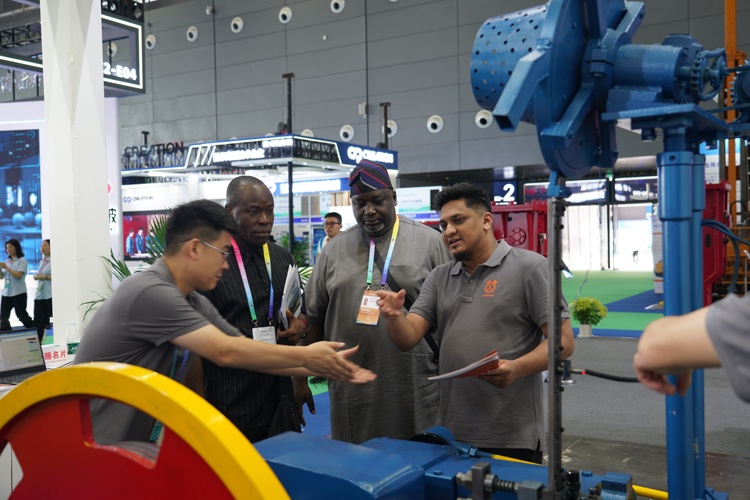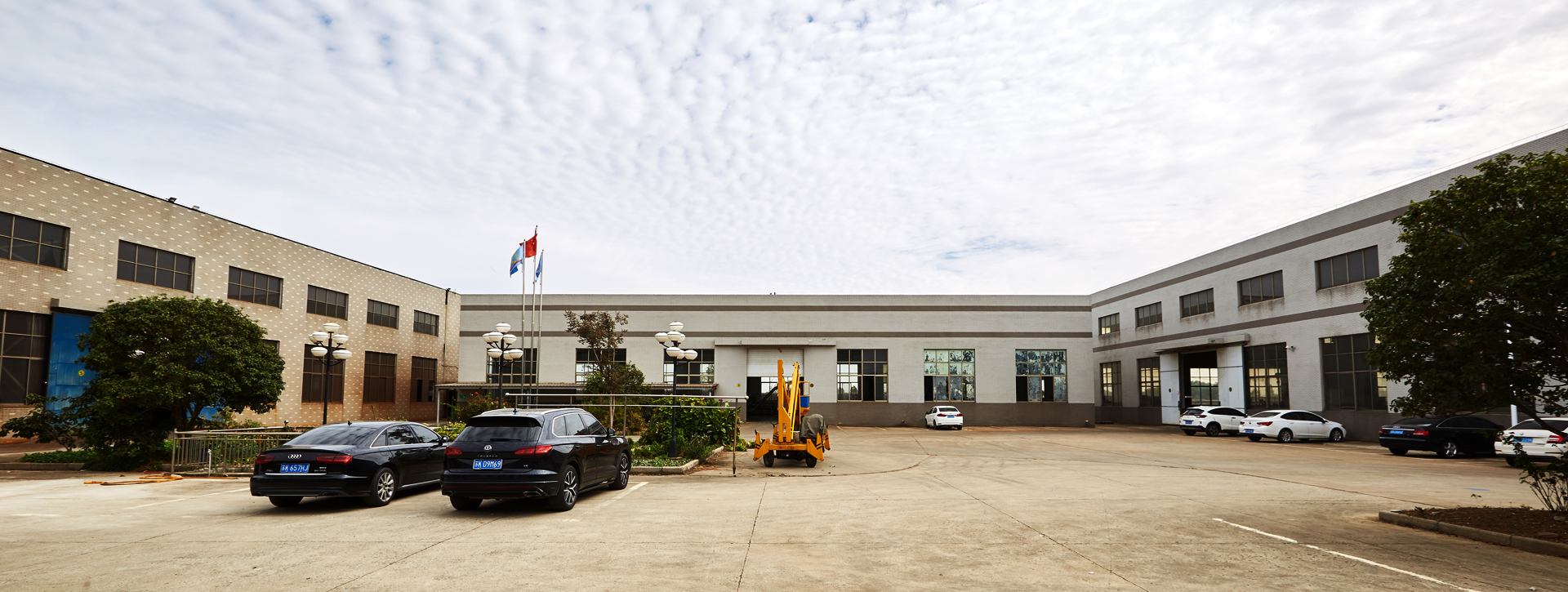Explore the world of nail making machines ! Discover how these powerful machines work, their key components, types, benefits (speed, cost savings!), applications, and crucial buying factors to revolutionize your production line.
From Wire to Wonder: The Mighty Nail Making Machine
Imagine the sheer number of nails holding together the world around you – framing houses, securing furniture, building bridges, and manufacturing countless products. This ubiquitous fastener, essential to civilization, begins its life not through slow, manual labor, but thanks to the relentless rhythm of the nail making machine . These industrial powerhouses are the unsung heroes of construction and manufacturing, transforming simple coils of wire into perfectly formed nails at astonishing speeds. Understanding their operation, types, and capabilities is crucial for anyone involved in fastener production or sourcing.

The Core Principle: Cold Heading Technology
Most modern nail making machines operate on the principle of cold heading , a type of cold forging. This process involves forming metal wire at room temperature (or slightly elevated) using immense pressure within specialized dies. This contrasts with older, inefficient hot forging methods.
Here’s a simplified breakdown of the nail making process within a typical automatic wire nail machine :
Wire Feeding & Straightening: A coil of wire (typically steel, but also copper, aluminum, or coated varieties) is loaded onto the machine. The wire is pulled through a series of rollers that meticulously straighten any curves or bends acquired during coiling. Consistent straightness is vital for precise nail formation.
Gripping & Feeding: Gripping mechanisms firmly hold the straightened wire and feed a precise, predetermined length (determining the nail's shank length) into the forming area. This feeding action is incredibly rapid and accurate.
Head Forming (Upsetting): This is the heart of the cold heading nail machine process. The advanced end of the fed wire is clamped firmly. A powerful punch, driven by the machine's crankshaft or toggle mechanism, impacts the wire end with tremendous force against a stationary die (the heading die). This pressure causes the wire tip to deform plastically, flowing into the die cavity to form the nail head – whether it's a smooth round head, a flat head, a countersunk head, or even a specialized profile like a roofing nail head. Modern machines often use multiple dies and punches in sequence to achieve complex head shapes efficiently.
Pointing: Simultaneously with or immediately after head formation, the opposite end of the wire is shaped into the nail point. This is primarily done using specialized cutting dies . As the dies close around the wire shank, they not only cut it to length but also shear and form the material into a sharp point (e.g., diamond point, blunt point, chisel point). Some machines may use additional pointing tools for specific point styles.
Shank Finishing (Optional): While the basic shank is formed by the wire itself, some machines incorporate features like rolling dies to add annular rings (rings for better grip) or spirals to the shank, creating deformed shank nails (common for concrete) or screw shank nails (for wood).
Ejection: The newly formed nail is ejected from the dies, usually via an air blast or mechanical kicker, and directed onto a conveyor belt or into a collection bin. The machine immediately cycles to feed the next length of wire, repeating the process continuously.
Secondary Operations (Optional): Depending on the final nail type, the ejected nails may proceed to secondary stations integrated into the nail production line . This can include:
Polishing/Tumbling: To smooth burrs and create a uniform finish.
Coating: Galvanizing (hot-dip or electro), painting, or other coatings for corrosion resistance.
Sorting & Packaging: Automated systems count and box nails for shipment.
Anatomy of a Nail Making Machine: Key Components
Frame & Drive System: A heavy-duty, rigid frame houses the entire machine, absorbing immense forming forces. The drive system, often a powerful electric motor transmitting power via a flywheel, crankshaft, and connecting rods (or toggle mechanisms), provides the necessary force for the punches. Gearboxes ensure optimal speed and torque.
Wire Feeding & Straightening Unit: Comprises wire coil holders, guides, and precision straightening rollers crucial for feeding perfect wire into the dies.
Cut-Off & Gripping Mechanism: Precisely cuts the wire to length and securely grips it during the heading and pointing operations. Accuracy here is paramount for consistent nail length.
Heading Punches & Dies: Hardened steel tools that form the nail head under extreme pressure. Dies are complex and precisely machined to create the desired head profile. Punches transfer the machine's force to the wire.
Cutting/Pointing Dies: Hardened steel dies that cut the nail to its final length and simultaneously form the point through a shearing and forming action. Designs vary significantly based on the desired point type (diamond, chisel, blunt).
Ejection System: Ensures the finished nail is reliably and quickly removed from the forming area after each cycle, preventing jams.
Control System: Modern machines feature sophisticated PLC (Programmable Logic Controller) systems. These manage the entire sequence of operations, monitor machine parameters (speed, force, temperature), count production, detect jams, and facilitate easy setup for different nail specifications. User-friendly HMI (Human-Machine Interface) panels allow operators to input settings and monitor performance.
Lubrication System: Essential for reducing friction, preventing tool wear, and dissipating heat generated during high-speed forming. This can be oil mist systems or flood lubrication, often integrated with filtration.
Navigating the Types of Nail Making Machines
The choice of nail manufacturing equipment depends heavily on the desired nail type, production volume, and level of automation needed:
Automatic Wire Nail Machines: The workhorses of the industry. These fully integrated high speed nail machines perform the entire process (feed, cut, head, point, eject) in one continuous cycle. Highly efficient for bulk production of common nails, finishing nails, box nails, etc. Sub-types often refer to the number of dies/forming stations:
Single-Die Machines: Simpler, often entry-level machines forming the head and point in essentially one main stroke. Suitable for basic round wire nails.
Double-Die Machines: Feature two distinct forming stations – one primarily for heading, the next for pointing/final forming. Offers greater flexibility for more complex head or point shapes than single-die machines.
Multi-Die/Progressive Header Machines: Advanced machines with multiple forming stations (e.g., 2, 3, 4, or even 5). Wire moves progressively through each station, with a specific operation (pre-heading, final heading, pointing, shank deformation) performed at each step. This allows for highly complex nail geometries (e.g., large or specialized heads, unique points, deep ring shanks) at very high speeds and with excellent material grain flow. Represents the pinnacle of industrial nail machine technology.
Cut Nail Machines: Produce square-cut nails (historically significant, now often for restoration or specialty applications like flooring). These machines shear nails from a strip or bar of metal rather than forming them from wire via cold heading. They produce a distinctly different nail with a tapered rectangular cross-section and a blunt point. Less common than wire nail machines for general purpose nails.
Specialized Nail Machines:
Coil Nail Machines: Produce nails collated into coils for use in pneumatic coil nail guns (common in roofing, fencing, framing). These are essentially automatic wire nail machines with an integrated collation system (wire or plastic) that binds the nails together as they are produced.
Roofing Nail Machines: Specifically designed for high-volume production of large-headed, often ring-shanked or screw-shanked roofing nails, frequently with coils. Built for robustness and speed.
Brad Nail & Pin Machines: Manufacture very small diameter, headless or small-headed nails (brads, pins) used in finish carpentry and furniture. Require extreme precision.
Duplex Head Nail Machines: Produce nails with two heads, designed for easy removal from concrete forms.

The Compelling Advantages of Automation: Why Invest?
Investing in a modern nail making machine delivers significant competitive advantages:
Unparalleled Production Speed & Volume: This is the primary driver. Modern machines produce nails at rates of hundreds to thousands per minute . A single machine can easily replace dozens or even hundreds of manual workers, enabling factories to meet massive global demand.
Dramatic Cost Reduction: While the initial investment is significant, the cost per nail plummets due to reduced labor requirements, minimized material waste (cold heading is highly efficient), and consistent high output. Automation drives down unit economics.
Exceptional Consistency & Quality: Machines eliminate human variability. Every nail produced within a run will have virtually identical dimensions (length, head diameter, point shape, shank features), weight, and mechanical properties. This consistency is critical for automated assembly processes and structural integrity.
Material Efficiency: Cold heading utilizes material very efficiently. Scrap is primarily limited to the coil ends and minimal cutting flash. Sophisticated feeders minimize waste.
Enhanced Worker Safety: Automating the hazardous tasks of high-force forming and cutting significantly reduces the risk of hand injuries associated with older or manual methods.
Flexibility (Within Range): Modern PLC-controlled machines can be quickly set up (tooling changeovers) to produce different nail sizes and types (within the machine's capacity), allowing manufacturers to respond to diverse customer orders efficiently.
Scalability: Multiple machines can be integrated into production lines, easily scaled to match growing demand.
Beyond Construction: Diverse Applications of Machine-Made Nails
While construction (framing, roofing, siding, fencing) is the dominant market, nails produced by these machines serve countless industries:
Furniture & Cabinetry: Assembly, upholstery, trim work (finish nails, brads).
Packaging & Palletizing: Building crates, boxes, and securing pallets.
Automotive & Appliance: Interior trim, component assembly.
DIY & Retail: The vast array of nails found in hardware stores for consumer use.
Specialized Industrial Applications: Concrete formwork (duplex head), insulation, electrical box securing, marine applications (specialty coated nails).
Investing Wisely: Key Factors When Choosing a Nail Making Machine
Selecting the right nail making machine is a critical decision. Consider these factors carefully:
Nail Specifications: This dictates the machine type needed. Define:
Nail Type (e.g., common, finishing, roofing, coil, brad, specialty?)
Shank Diameter (Wire Gauge/Gauge Size - e.g., 6D, 8D, 16D, etc. or mm)
Shank Length
Head Type & Size
Point Type
Shank Features (Smooth, Ring Shank, Spiral Shank?)
Material (Mild Steel, Hardened Steel, Stainless, Copper, Aluminum?)
Required Production Capacity (Nails Per Minute - NPM): Calculate your target daily/weekly output. Choose a machine that meets peak demand with some overhead. Don't under or drastically over-specify initially.
Wire Capacity: The maximum diameter (gauge) of wire the machine can handle. Ensure it covers your required range.
Level of Automation: Basic vs. fully automatic with PLC, HMI, auto-lubrication, and potentially integrated secondary operations (tumbling, counting). Higher automation boosts output consistency and reduces labor needs.
Machine Type & Dies: Decide between single-die, double-die, or multi-die based on nail complexity and volume needs. Understand the cost and changeover time for different die sets.
Build Quality & Reputation: Research nail machine manufacturers and nail machine suppliers . Look for robust construction (cast iron frames), high-quality components (bearings, gears), and proven reliability. Check references and after-sales service reputation. Established brands often offer better support and parts availability.
Control System: A modern, user-friendly PLC and HMI are essential for setup ease, troubleshooting, monitoring, and production data logging.
Energy Efficiency: Consider motor ratings and overall power consumption, a growing factor in operational costs.
Footprint & Installation: Ensure your facility has adequate space, power supply (voltage, phase), compressed air (for ejection), and foundation support for the machine's weight and vibration.
Price vs. Value: Nail machine price varies enormously based on type, capacity, automation level, brand, and origin. Cheaper machines often mean compromises in durability, speed, precision, and support. Analyze the Total Cost of Ownership (TCO), including tooling, maintenance, downtime, and energy costs, not just the purchase price.
After-Sales Support & Spare Parts: Availability of technical support, training, and readily available spare parts (especially critical dies and punches) is vital for minimizing costly downtime. Choose a supplier with a strong local presence or reliable international logistics.

The Future of Nail Making: Innovation on the Horizon
The evolution of nail manufacturing equipment continues:
Increased Automation & Integration: Further integration of inline quality control (vision systems), automated packaging, and real-time production data analysis feeding into factory management systems. Robotics for material handling.
Smarter Machines & Industry 4.0: Enhanced IoT connectivity for predictive maintenance (monitoring tool wear, vibration, force), remote diagnostics, optimized production scheduling, and seamless integration into smart factories.
Enhanced Tooling & Materials: Development of even more durable, wear-resistant die and punch materials (e.g., advanced carbide coatings, specialized tool steels) to extend tool life and reduce changeover frequency, especially crucial for high-speed multi-die machines.
Energy Efficiency Focus: Design improvements targeting reduced power consumption per thousand nails produced.
Flexibility for Customization: Machines adaptable to producing smaller batches of highly specialized or custom-designed nails cost-effectively.
Conclusion: The Indispensable Engine of Industry
The nail making machine is far more than just a piece of factory equipment; it is a fundamental pillar of modern manufacturing and construction. Its ability to transform raw wire into vast quantities of highly consistent, reliable fasteners with remarkable efficiency and economy underpins countless industries. From towering skyscrapers to intricate furniture, the humble nail, born of precision engineering and immense force within these machines, holds our world together. As technology advances, making machines smarter, faster, and more adaptable, the production of this essential component will continue to evolve, driving efficiency and enabling new possibilities in building and manufacturing. For businesses looking to establish or expand their presence in the fastener market, understanding and investing wisely in the right nail making machine technology is not just an operational decision, but a strategic imperative for growth and competitiveness


